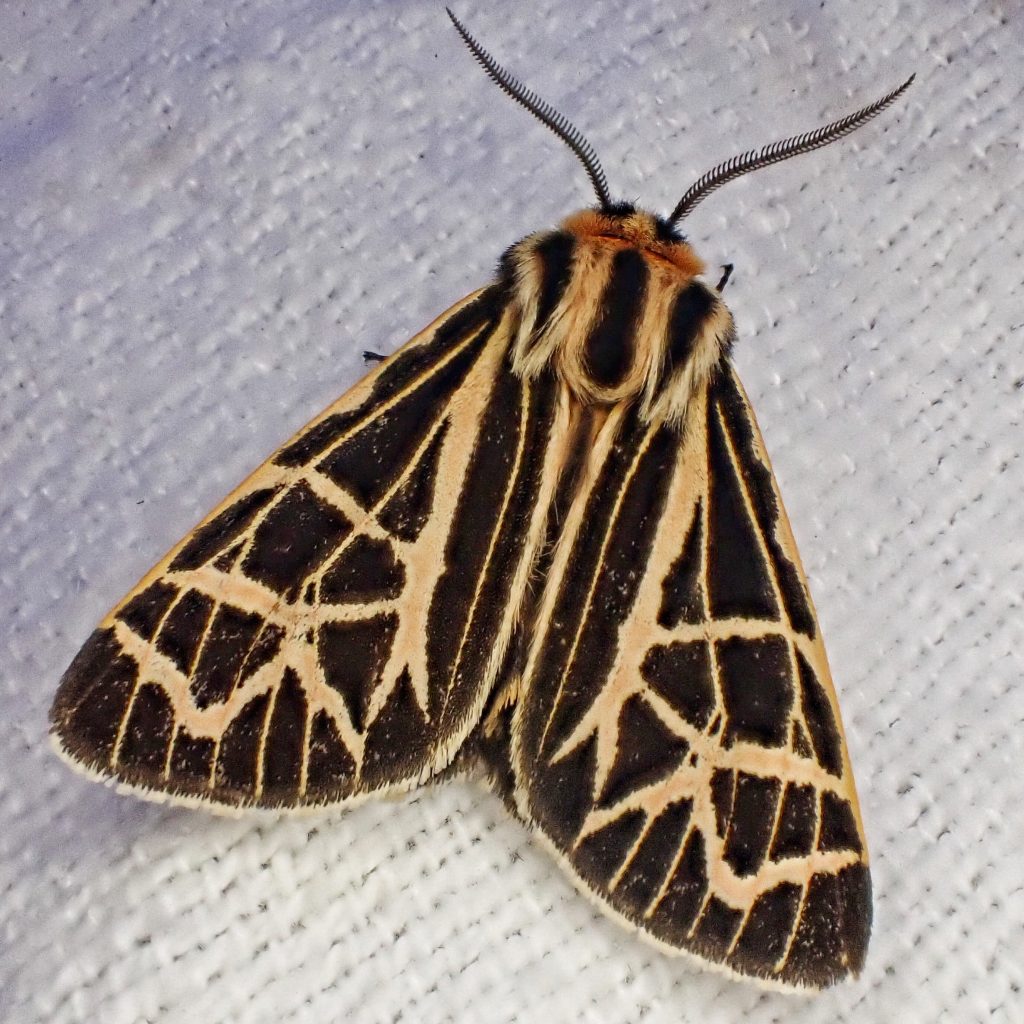
The first time I ever saw an Apantesis ornata (ornate tiger moth) was on a Father’s Day weekend camping trip to Big Summit Prairie in the Ochoco Mountains of central Oregon with my nbo Morgan. Unfortunately it immolated itself in our campfire, either a love sacrifice to the only light in that clearing (this was the summer before I ‘went over to the dark side’ as Carl Barrentine, one of my mothing mentors, describes giving in to the pull of UV lighting for moths), or a commentary on the futility of existence. Hopefully the former, although ensaddenating either way.
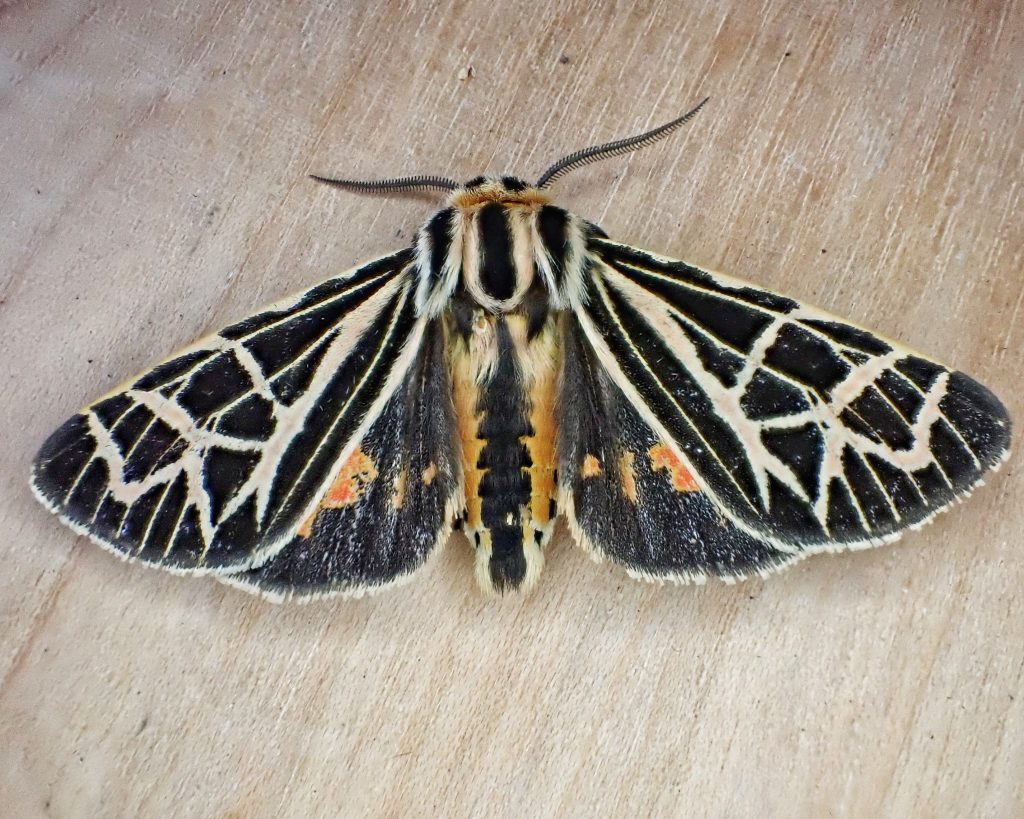
As I fished its charred corpse from the ashes, I was quite struck by the bold pattern on the forewing, and the contrasting orange and black hindwing. This was one of those seminal moments in my burgeoning interest in nighttime lepidoptera. Such beauty, hidden by the night, so many lives cloaked by darkness, a whole other world of bugs living out their lives outside of my view. And though it took another 11 months, and the fateful trip to Jawbone Flats that I talk about in ‘Mothing ‘, for me to get the equipment necessary for nighttime mothing, the die was probably cast after that encounter with my first ornate tiger moth.
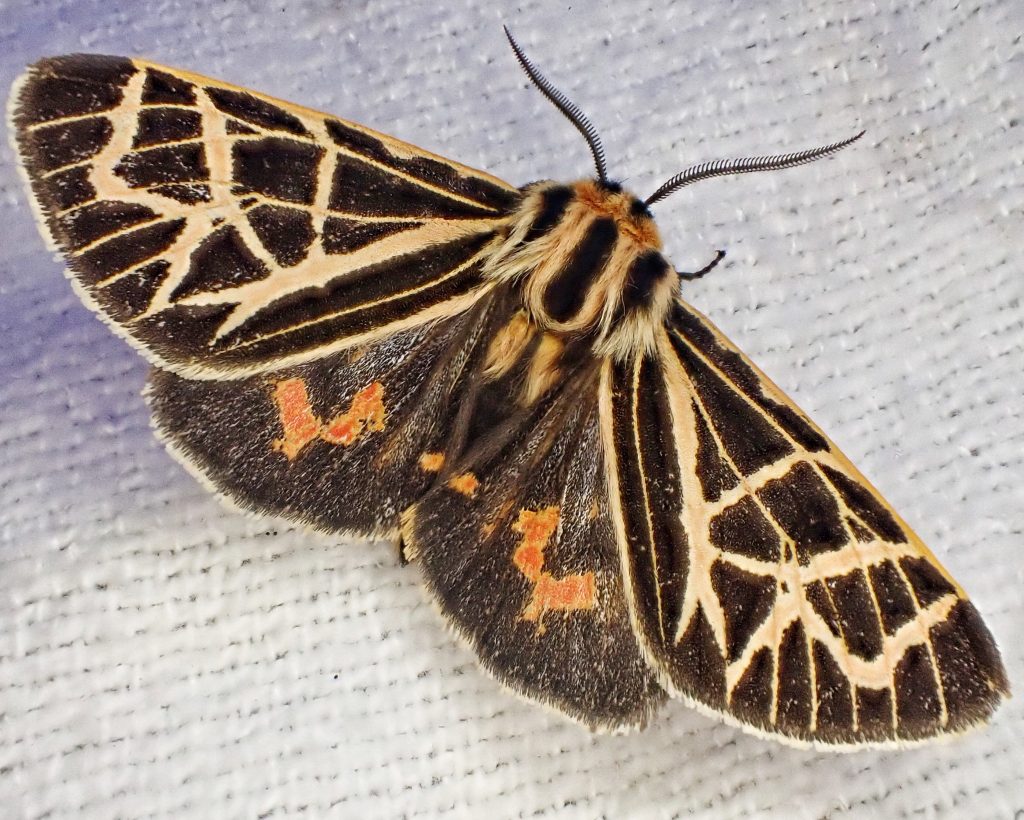
This species is highly variable in coloring and pattern. “This species demonstrates geographic variation in the Pacific Northwest. Moths from southwestern Oregon are slightly larger and more brightly colored than those from most other populations and have reduced pale scaling on the veins. Specimens from southwestern Washington are small with well-developed transverse lines and pale veins and have small eyes. These resemble A. edwardsii but the hindwing marginal spots are fused to the marginal band (separate in specimens illustrated by Schmidt (2009) and they lack pale scales at the base of the antenna present in that species.” Lars Crabo and Merrill Peterson, PNW Moths | Apantesis ornata . As you may have gathered from my extensive quoting of material from this site, it is an invaluable resource for learning about the moths in the families Drepanidae, Uraniidae, Lasiocampidae, Saturniidae, Sphingidae, Notodontidae, Erebidae, Euteliidae, Nolidae, and Noctuidae that inhabit our region.
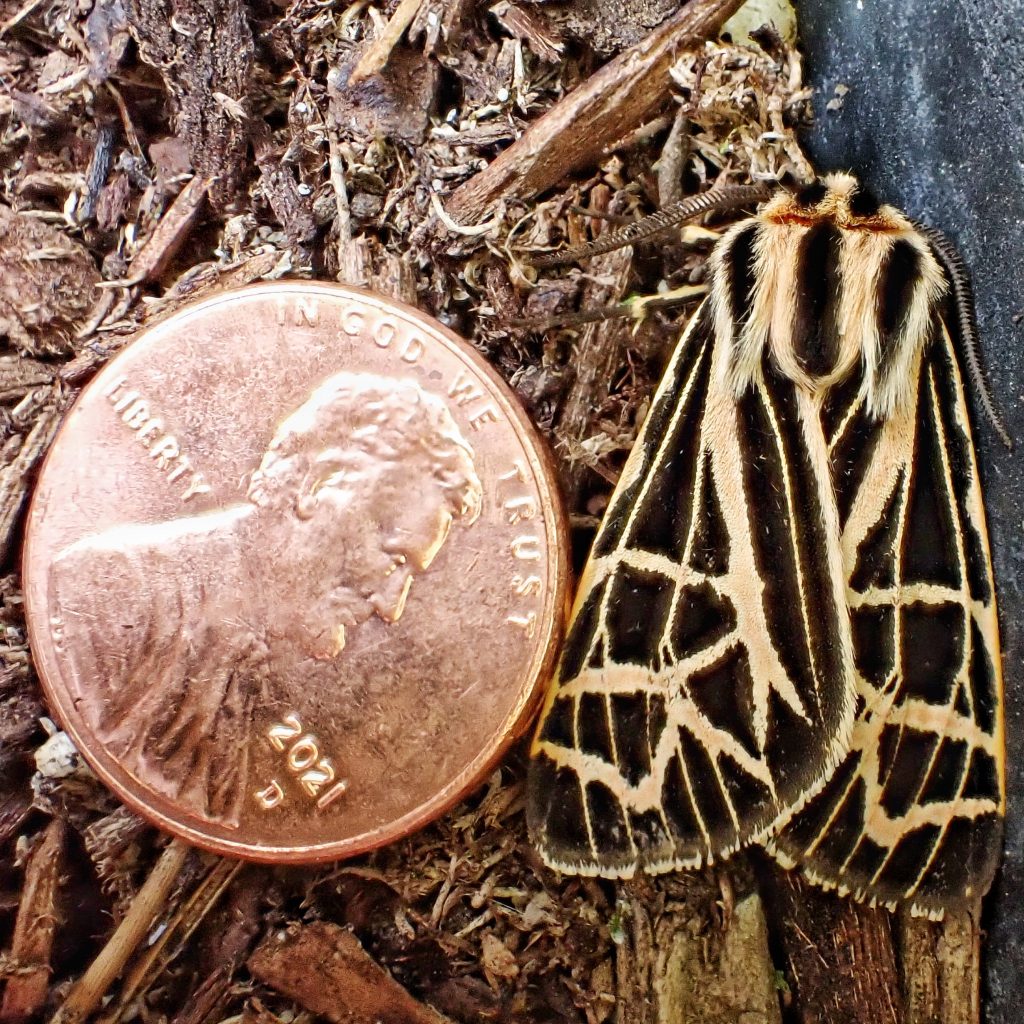
This species was formerly placed in the genus Grammia, and can still be found there in books such as “Moths of Western North America” (Powell/Opler; 2009), but “…As a result of phylogenetic research published in 2016, the genera Grammia, Holarctia, and Notarctia have been merged with Apantesis, and their species are now members of the genus Apantesis.” See Rönkä et al., (2016) Putting Parasemia in its phylogenetic place: a molecular analysis of the subtribe Arctiina (Lepidoptera) – RÖNKÄ – 2016 – Systematic Entomology – Wiley Online Library
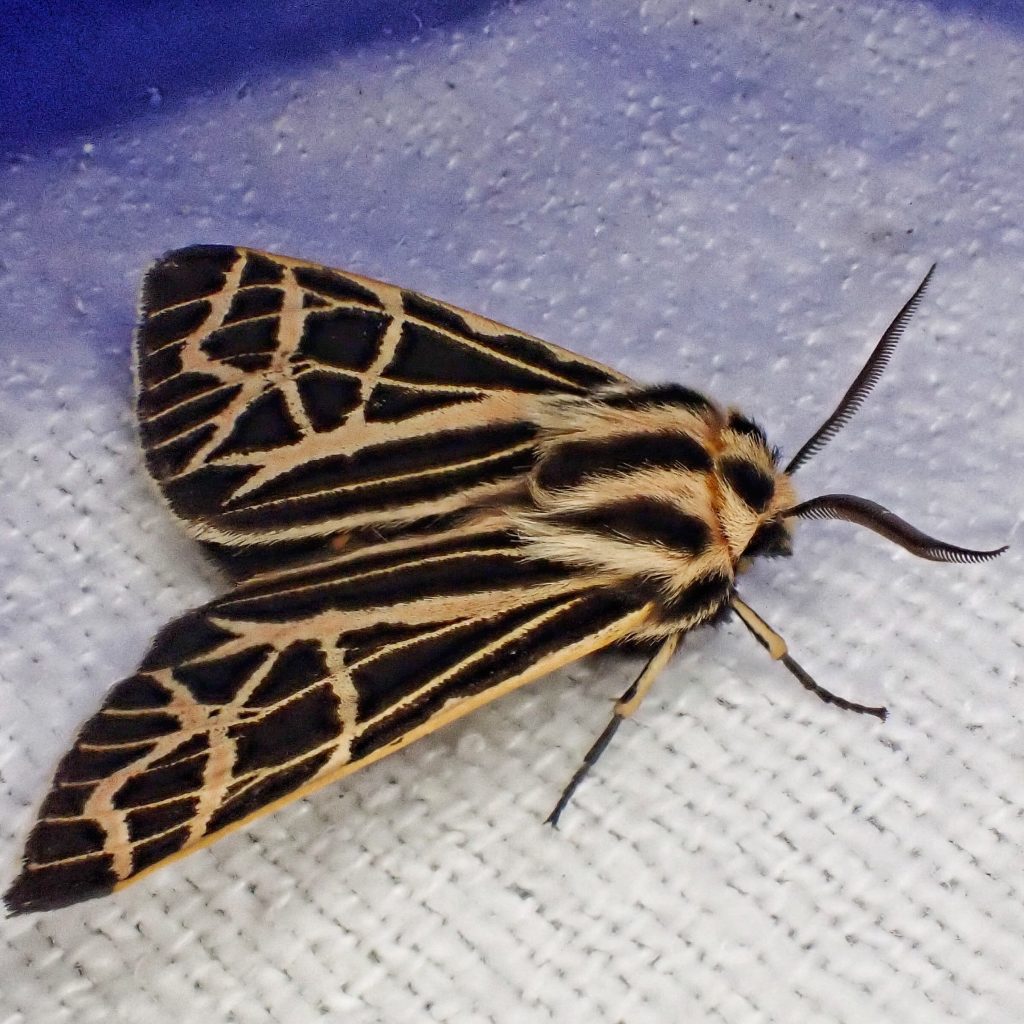
Description– “Apantesis ornata is a very common, variably colored tiger moth found in late spring and early summer. It is medium-sized (FW length 16–20 mm). The forewing appears black, typically with a net-like pattern of extensive yellowish or rosy off-white transverse lines and thinner pale veins. The hindwing color is variable from yellow-orange, orange, to orange-red, rarely entirely black. The hindwing is heavily marked with black, including the basal wing, multiple spots, and an irregular marginal band. These are often fused to each other, especially near the wing margin…Larva is covered with long black hairs dorsally and laterally, but has red hairs ventrally, and has a yellow-orange middorsal line.” PNW Moths | Apantesis ornata; the longitudinal line closest to the trailing edge of the forewing does not reach the margin with both forks
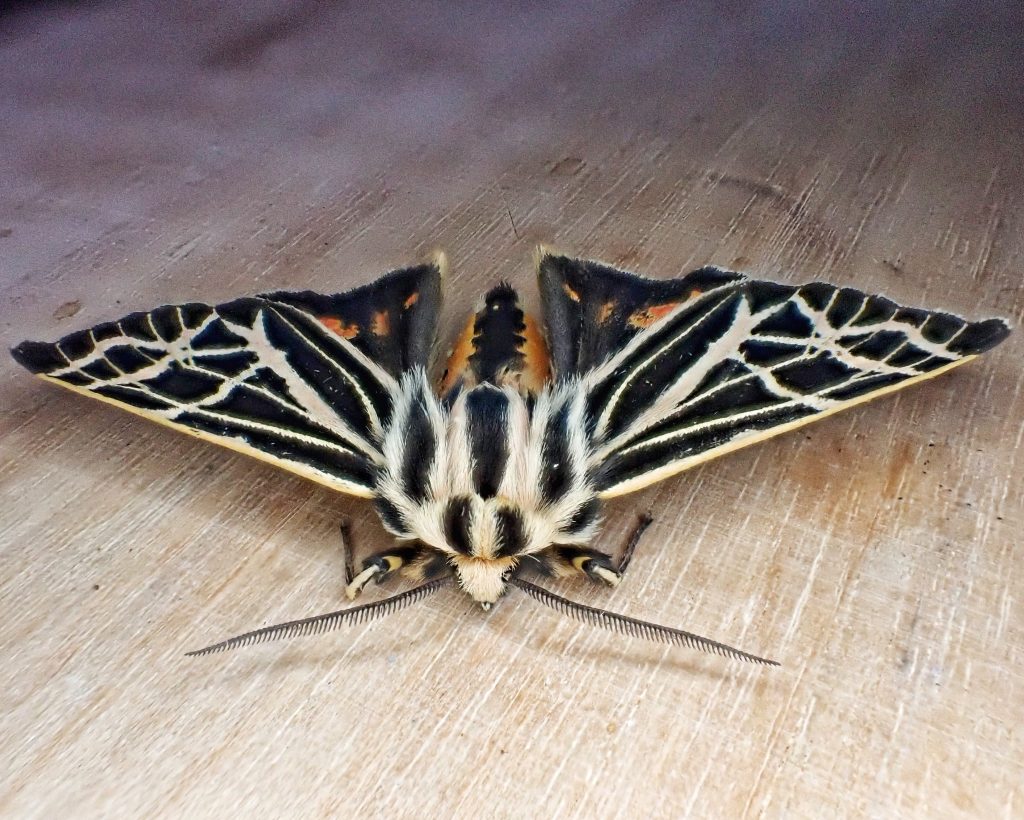
Similar species– Apantesis nevadensis lacks thin pale veins, and the longitudinal line closest to the trailing edge of the forewing reaches the margin, and it flies in late summer/fall; A. edwardsii is smaller, with much smaller eyes because it is Adya flying moth, and is quite rare in the PNW; A. complicata is only found in grasslands on Vancouver Island, and in the San Juan Islands; other Apantesis have different forewing patterns, best delineated by comparing photos at PNW Moths
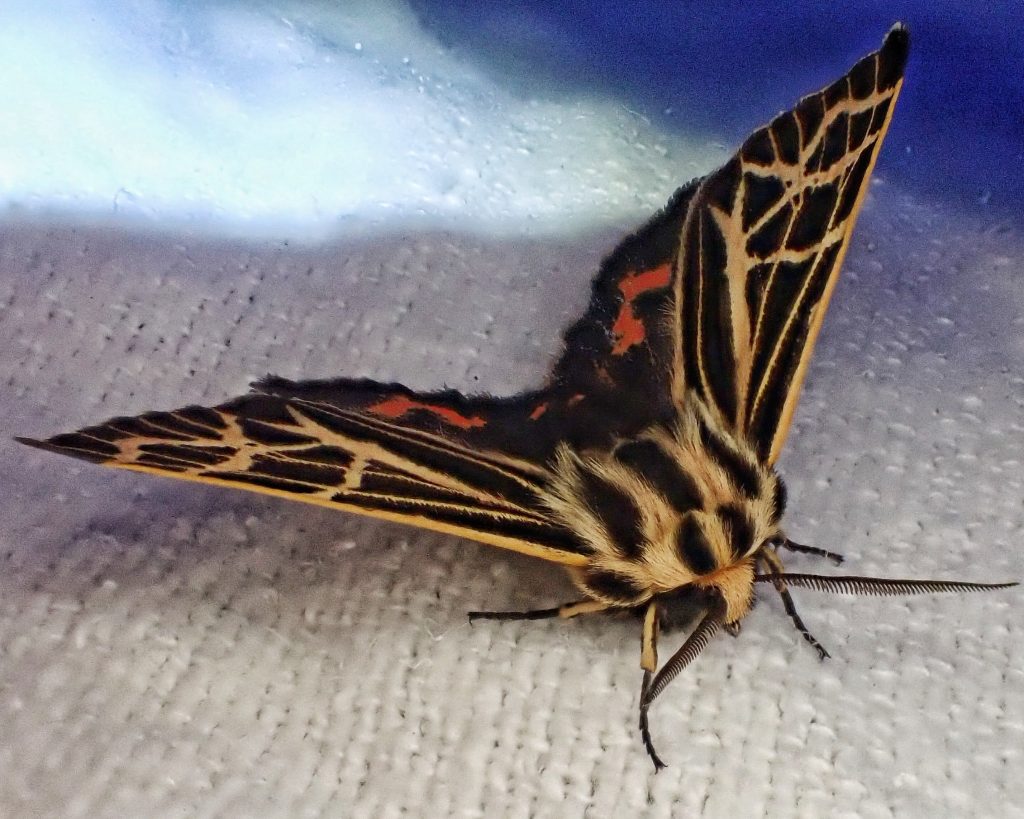
Habitat– “This species is common to abundant in moist forest and grassland habitats throughout the Pacific Northwest, but is mostly absent from desert rangeland habitats east of the Cascades. These habitats include coastal grasslands adjacent to the ocean, coastal rainforests, low elevation grasslands west of the Cascades, oak woodlands, mixed hardwood-conifer forests in the mountains, ponderosa pine forests at middle elevations east of the Cascades, and high mountain meadows in both the Cascades and Rocky Mountain regions.” PNW Moths | Apantesis ornata
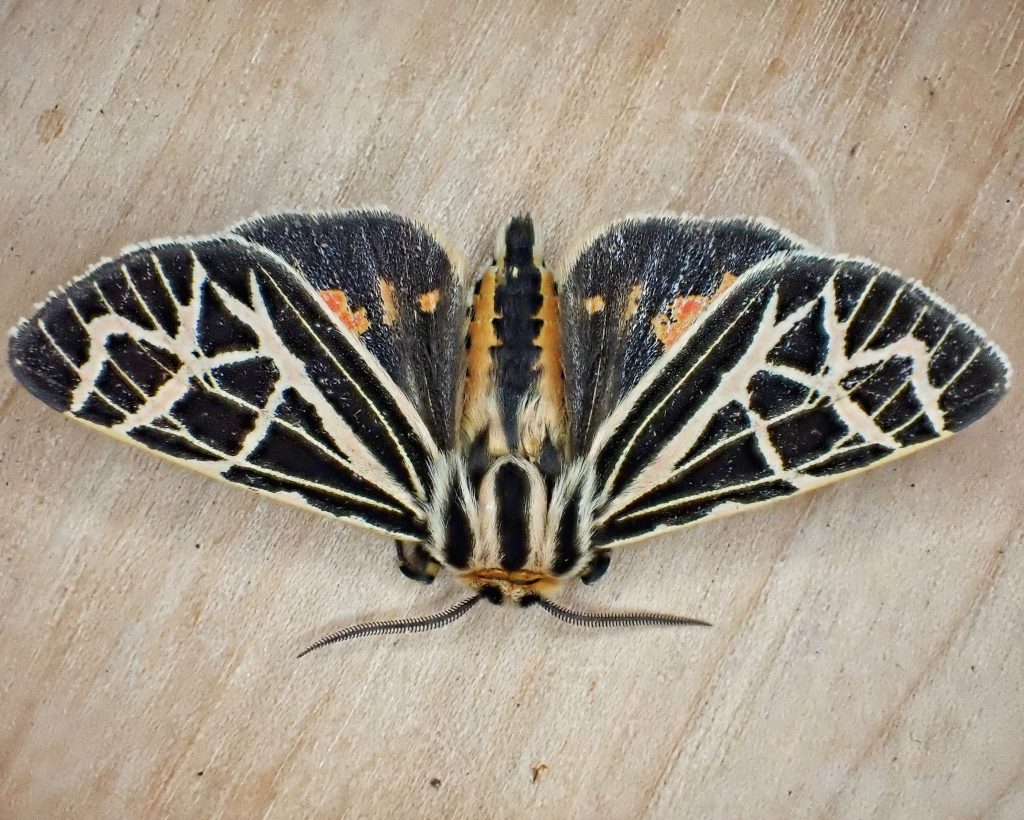
Range– “This species occurs in western North America west of the Rocky Mountains…Apantesis ornata occurs in the dry interior in the northern part of its range, occurring in southern British Columbia and eastern Washington to western Montana. It is found west of the mountains south of Puget Sound and is common throughout Oregon. The distribution appears to be limited in southern Idaho with records confined to the southeastern corner of the state.” PNW Moths | Apantesis ornata
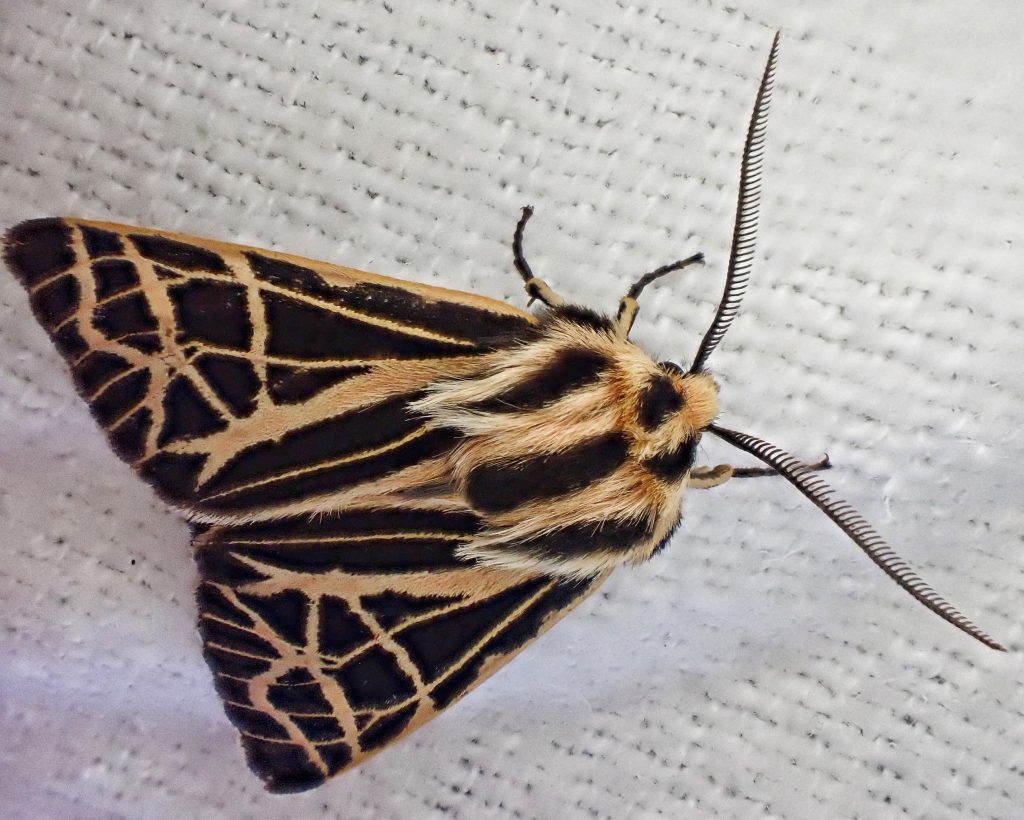
Eats-“This species is a generalist that feeds on a wide variety of herbaceous vegetation.” PNW Moths | Apantesis ornata
Eaten by– Presumably any insectivore that can catch and subdue them.
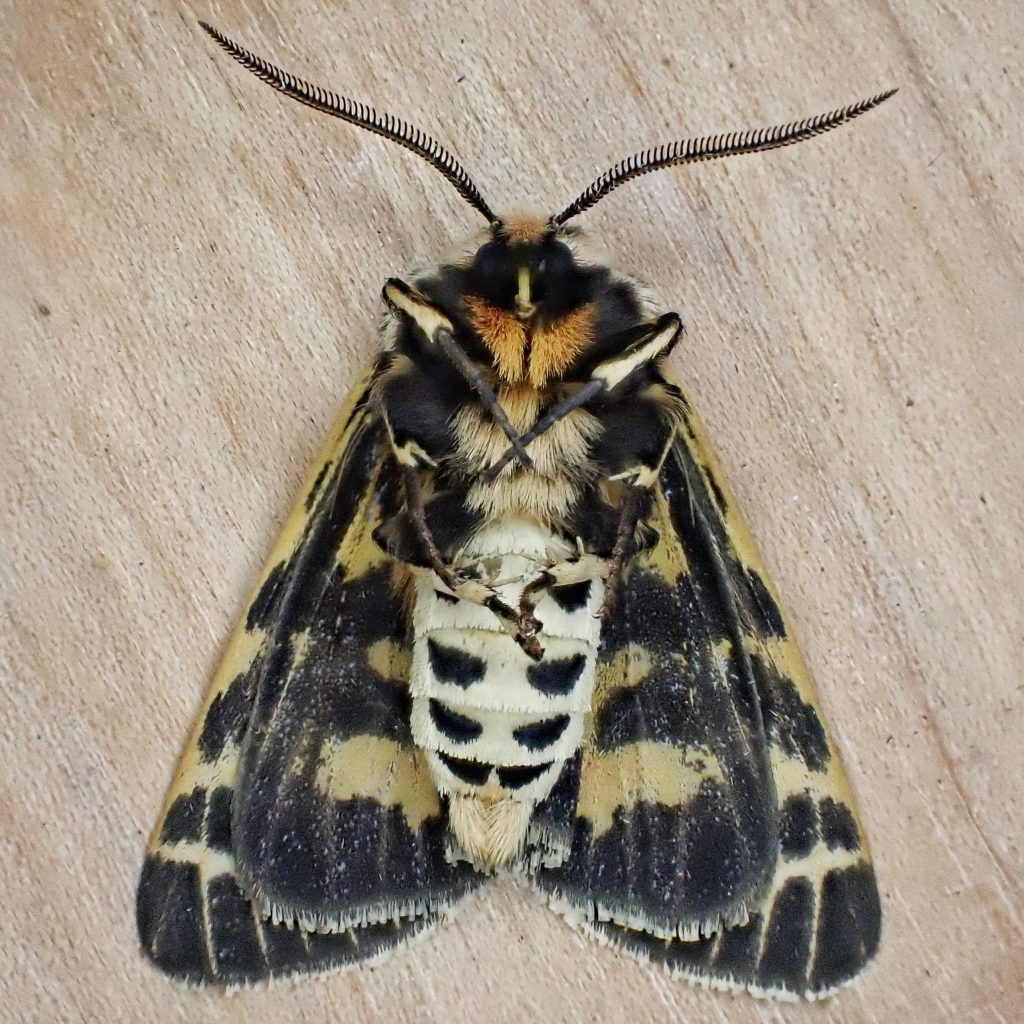
Adults active– “Flies from late spring through July, earliest at lower elevations. Males are nocturnal and are common in light traps whereas females are never collected at light.” PNW Moths | Apantesis ornata
Life cycle– “Apantesis ornata is single brooded” PNW Moths | Apantesis ornata; based on the timing of the adult flight I would guess this species overwinters as a pupa or late stage larva in diapause.
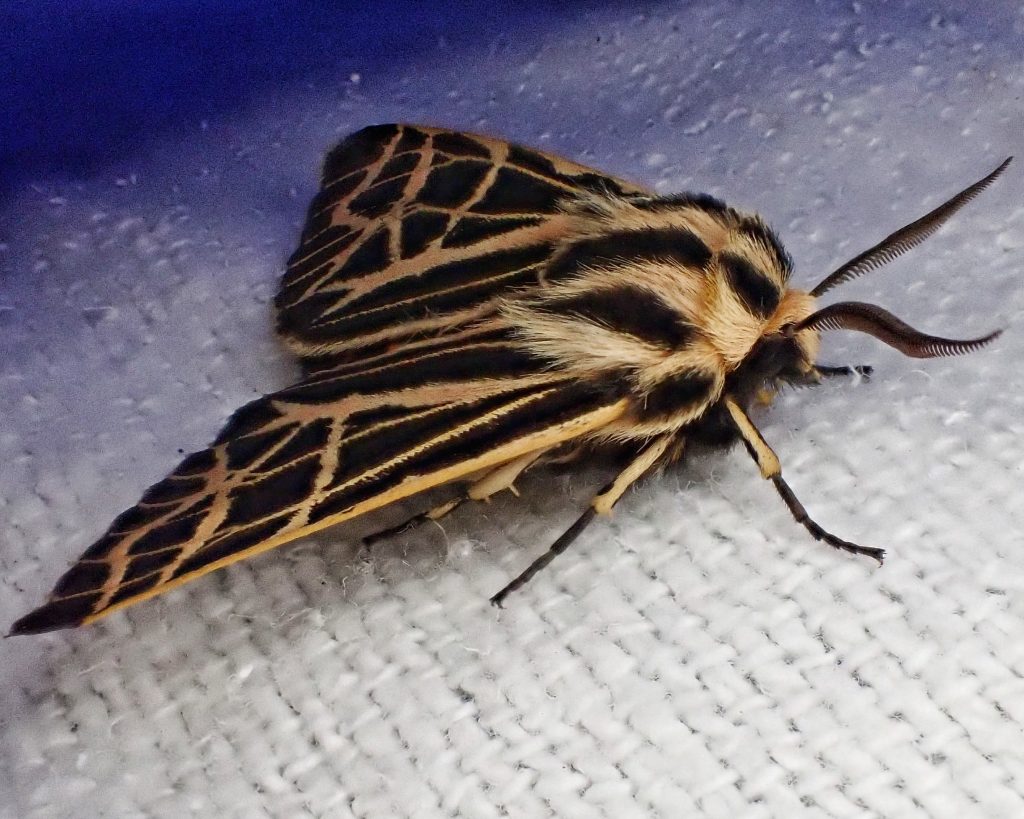
Etymology of names– Apantesis is apparently a Greek word for ‘an encounter/reply’, and Jaeger’s “A Source-book of Biological Names and Term” (1955) lists it as the source for this genus, but I have no idea what that refers to, and Francis Walker doesn’t deign to explain himself in his original description of this genus https://archive.org/details/listofspecimens13brit ; The specific epithet ornata is from the Latin word for ‘adorned/decorated’, an obvious reference for anyone who has seen this rather spectacular moth.
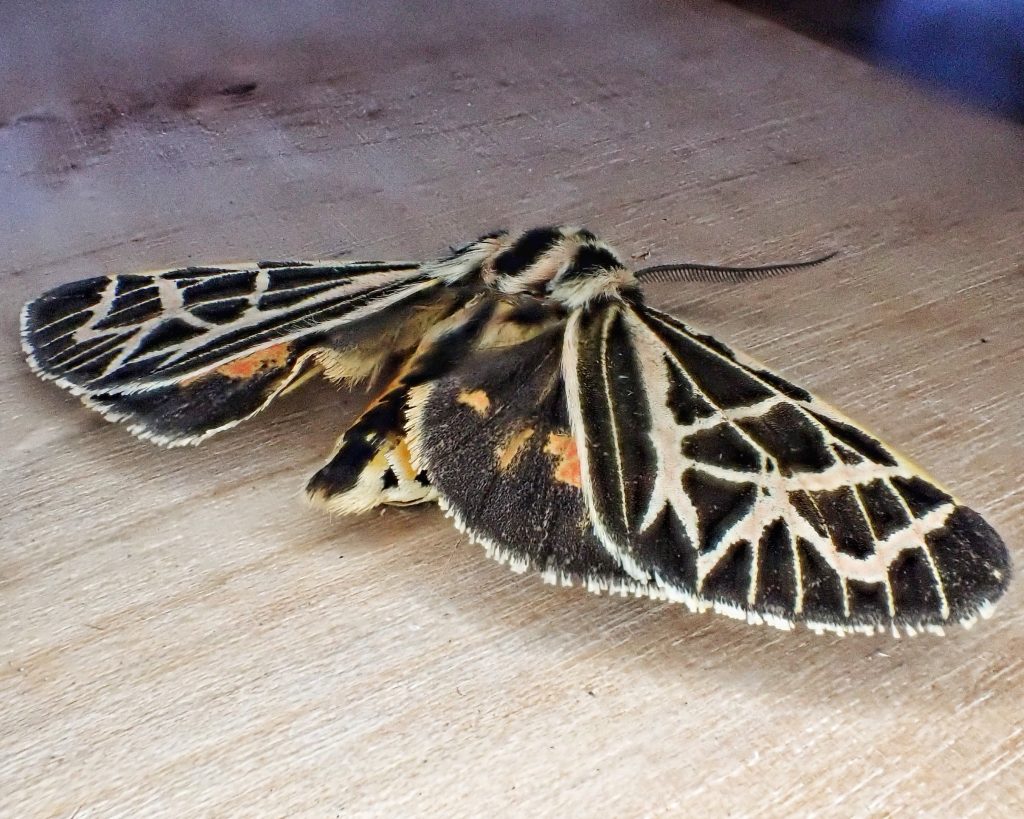
Species Apantesis ornata – Grammia ornata – Hodges#8177 – BugGuide.Net
http://mothphotographersgroup.msstate.edu/species.php?hodges=8177
https://archive.org/details/listofspecimens13brit
Ornate Tiger Moth Apantesis ornata (Packard, 1864) | Butterflies and Moths of North America
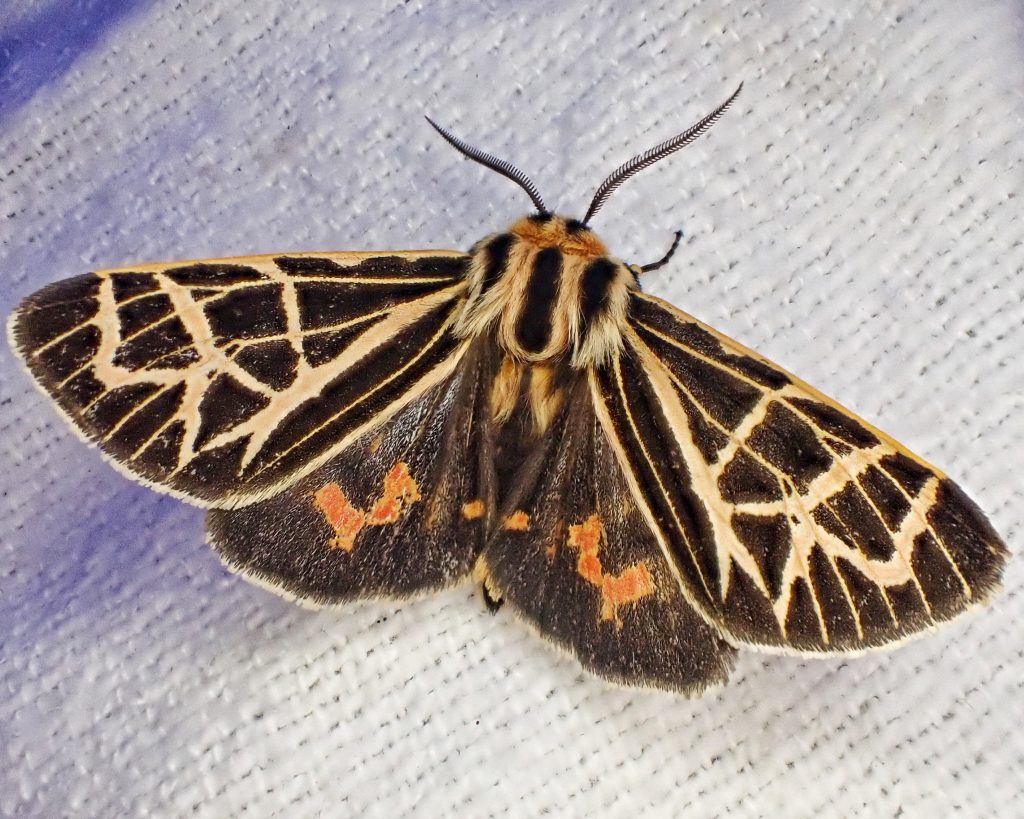
Thank you.
Thanks for your appreciation, Michael!
I found your article interesting after researching the Ornate Tiger Moth because I found a deceased one this morning under my dresser. The interesting part, I live in Virginia. I think this one is a little lost! I have a picture to share, but I’m not sure how to attach it.
Well, Carol, you can send me photos at recreationalnaturalist@10000thingsofthepnw.com
You might want to browse this list of other Apentesis sp. https://bugguide.net/node/view/5750/bgpage
Apantesis anna might be a better fit.